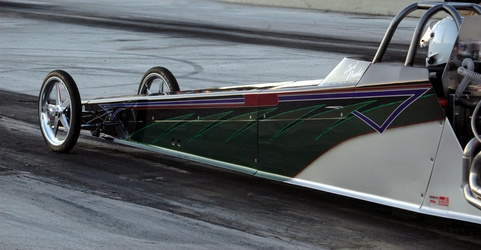
In the early 1950s, sanctioned drag racing became a popular way to get racers off the street and onto the relative safety of a track. Instead of rolling starts on streets and highways, racers launched from a static starting line, making a proper launch the difference between winning and loosing. Launching takes a mastery of clutch releasing, acceleration and millisecond reaction times. During launching, a Top Fuel Dragster reaches 100 mph in 1 second, imparting 4.5Gs of pull on the driver.
Depress the clutch completely to avoid clutch slipping. Shift the car into first gear.
Raise the rpm of the engine. If in a race scenario, raise the rpm to the red line of the tachometer. If under normal driving conditions, a slight raise in rpm is all that is needed to compensate for the drag placed on the engine from the clutch engagement.
Release the clutch while maintaining depression of the accelerator. If the rear wheels begin to spin, reduce accelerator input until wheels regain traction.
Shift through second, third, fourth and fifth gears as the engine reaches an elevated rpm, as signified by the tachometer. Under normal conditions, shift as the rpm reaches 50 percent. Under race conditions, take the engine to the red line before up shifting.
Depress the brake pedal with your left foot.
Bring the rpm of the vehicle with the accelerator. This builds torque within the drive train and torque converter, both of which are built to handle this "Brake/Torque" technique.
Release the brake with the accelerator fully or partially engaged based on the purpose of the launch.